Strategic Insights Into Competitor SEO Tracking Activity
Since you are not the only business that targets a certain audience, you need to look at others to succeed. Building your business and optimizing them in the search engine is not enough without comparison. Thus, you need competitor SEO tracking.
Competitor SEO tracking involves monitoring and analyzing the SEO performance of your direct competitors. This way, you will realize what is missing from our business that hinders from success.
In this article, we will uncover the strategic insight to do competitor seo tracking utilizing Sequence Stats as the tool.
Identify Your Real Competitor
The very first step before you can track other website SEO, you need to identify who your real competitors are. This way, you will not spend your time tracking the wrong website. Using Sequence Stats, finding the true competitors is not a hard job.
First, open your Sequence account and make sure you have a list of tracked keywords. From that list, the system will show the top 10 competitors that target the same keywords. Meaning that their business might intersect with yours.
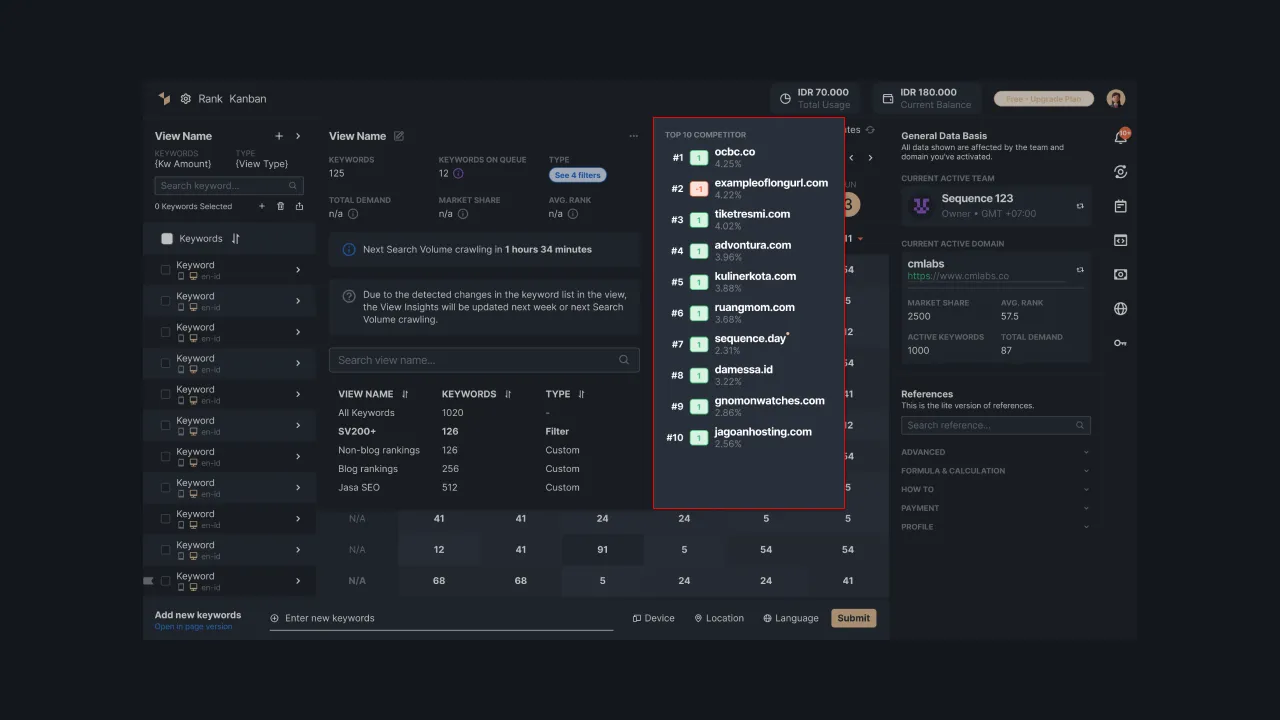 |
|---|
| Picture 1: List of top competitors based on the keywords tracked using Sequence Stats |
If you have analyzed which competitors are worth tracking, you need to add them to your watchlist. The Domain Watchlist feature enables you to get the valuable data of your competitors for a competitive analysis matter.
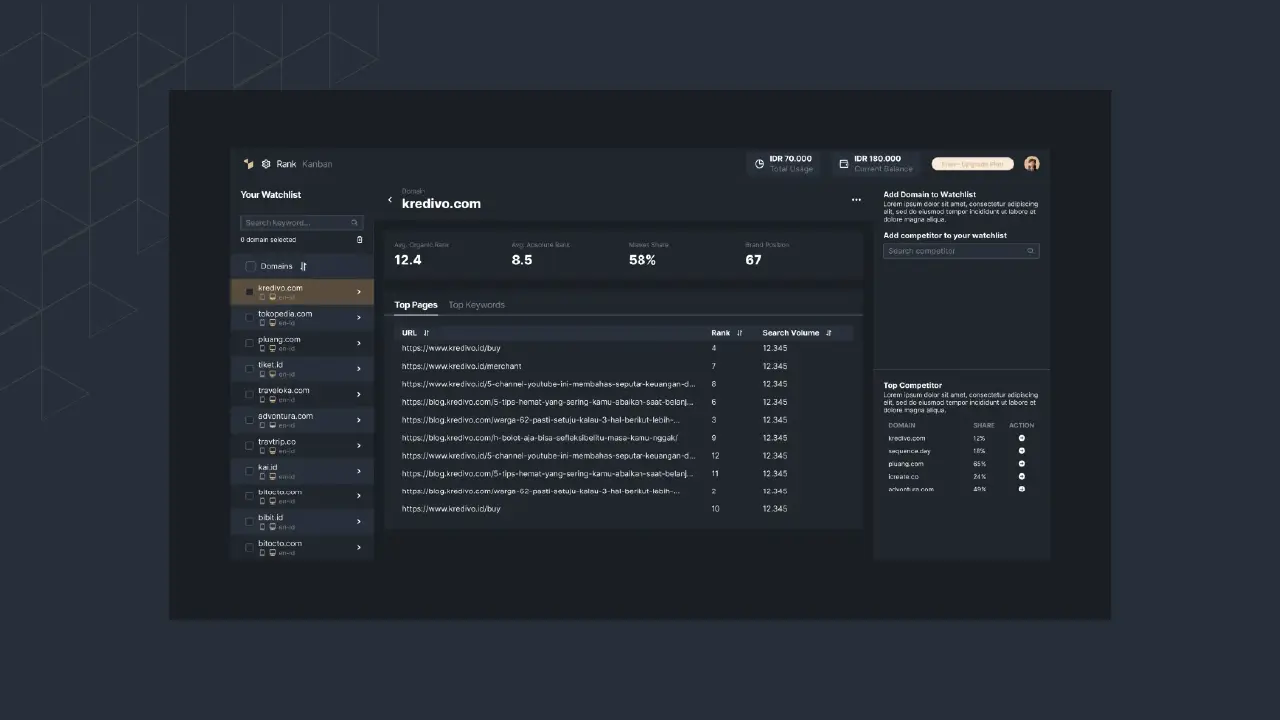 |
|---|
| Picture 2: List of competitors within the Domain Watchlist |
The data gathered from your competitors including their top performing keywords and page, market share, and brand position. With this data, you can perform a thorough and data-driven analysis.
Tracking Competitors’ Keywords
Once you have identified the key competitors of your business, you will need to track their keywords to get a greater insight into their strategy. As mentioned before, in the Domain Watchlist you can track competitors' top keywords and pages. Here’s the look.
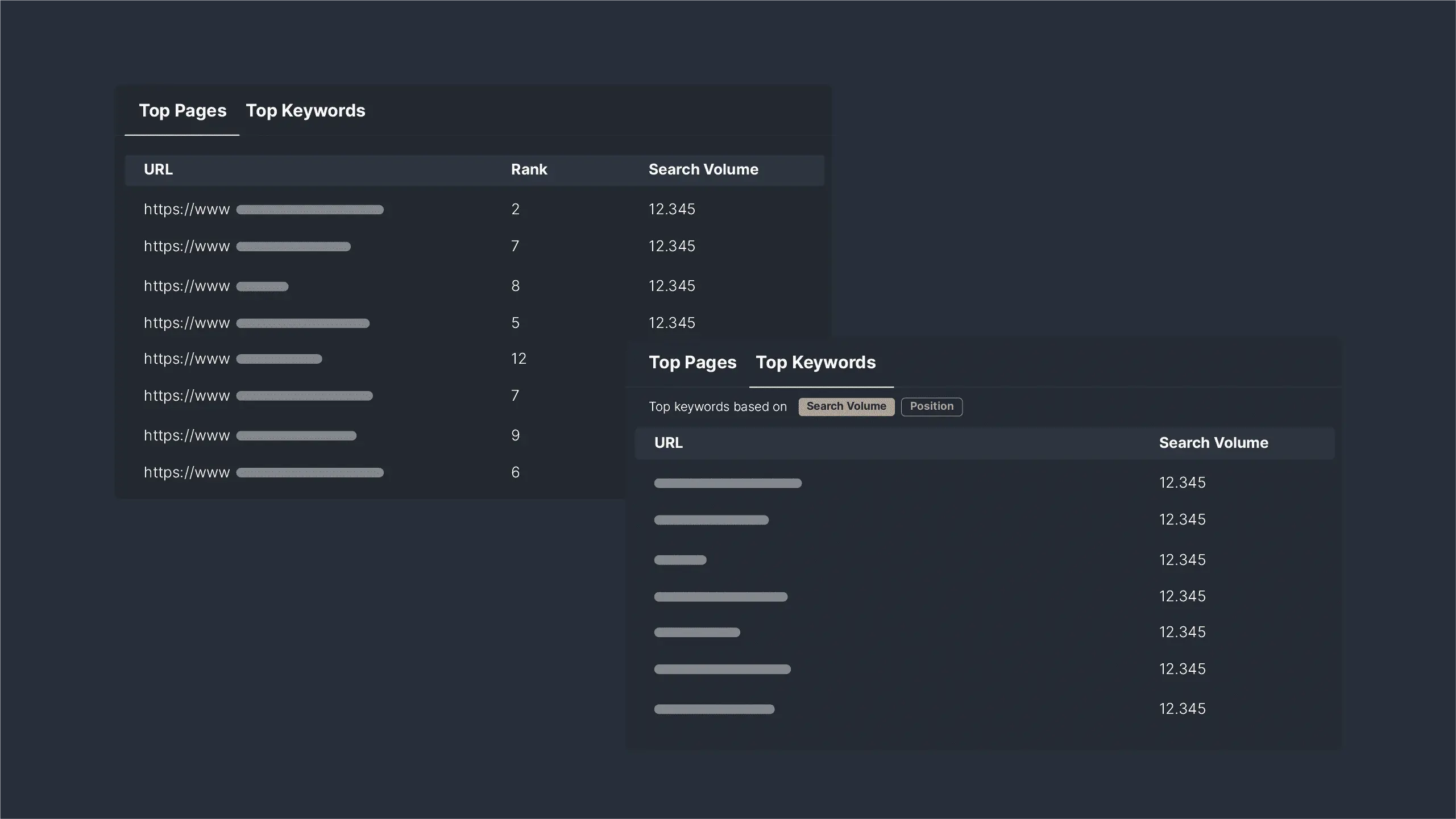 |
|---|
| Picture 3: Competitors’ top keywords and pages |
From the above data, you need to analyze it deeper. It's essential to analyze keyword competition and search volume. This analysis helps you prioritize keywords and determine their potential impact.
Here's how to analyze keyword competition and search volume:
- Keyword Difficulty: Use Keyword Research Tool to assess the keyword difficulty or competition level for each target keyword. Focus on keywords with a balanced mix of relevance and manageable competition.
- Search Volume: Choose keywords with a healthy search volume to ensure sufficient audience reach.
- Long-Tail Keyword Opportunities: Explore long-tail keywords that have lower competition but are highly relevant to your business.
- Competitive Gap Analysis: Compare your target keywords with those of your competitors. This allows you to uncover keyword opportunities where you can gain a competitive advantage.
With this approach, you can strategically select and prioritize the most valuable keywords for your SEO efforts. This helps optimize your content and enhance your chances of ranking well in search engine results.
Analyze Competitors’ On-page Element
Analyzing your competitor's on-page optimization can provide valuable insights into their SEO strategy and help you identify areas where you can improve your own website.
Here are some on-page elements you should note:
- Title Tags and Meta Descriptions
- Header Tags
- Content Quality
- Keyword Usage
- Image Optimization
Those are the on-page elements that cannot be missed. Once you have evaluated your competitor's on-page optimization, you can identify areas where you can improve your own website.
Assessing Competitor's Website Performance Metrics
There are some metrics to see whether the competitors are successful in the search engine or not. You can see it through their market share, brand position, and other SEO metrics. Here is how to see it through Sequence Stats.
Open your Sequence dashboard and go to the Stats menu. There you will find graphs of important data. To see the market share, scroll down and find the graph. Here is the look.
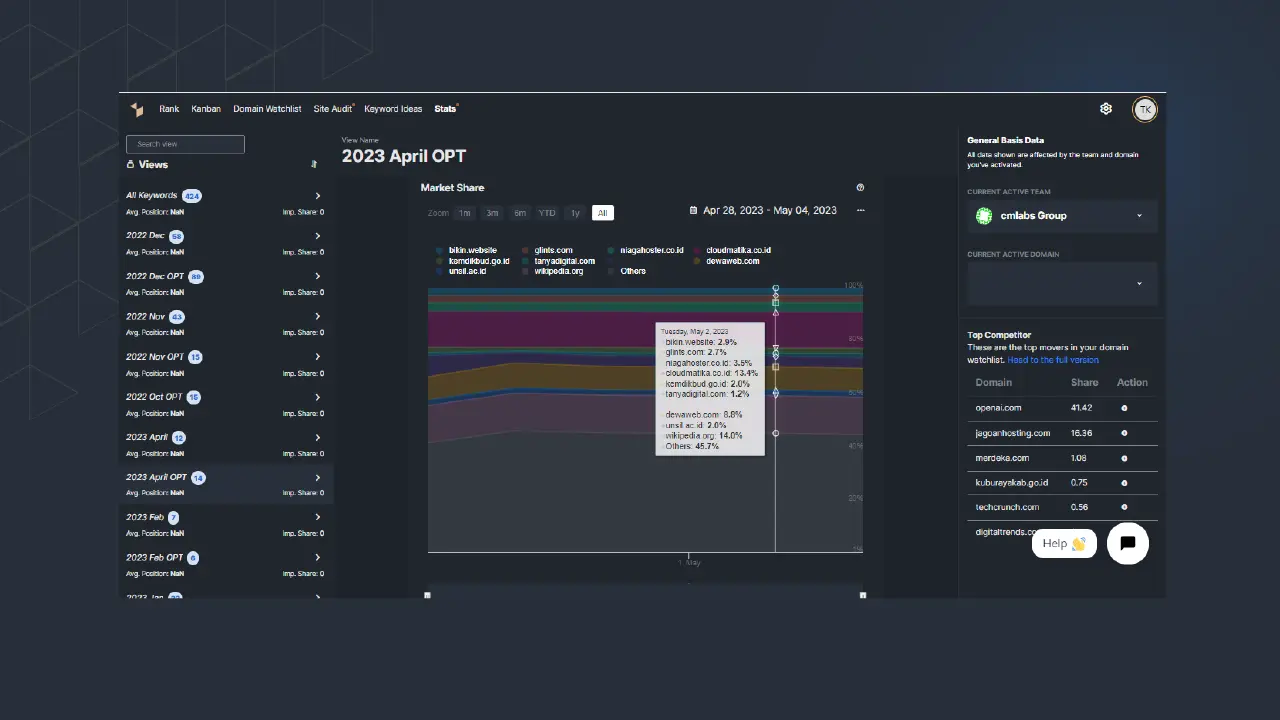 |
|---|
| Picture 4: Market Share data in Stats menu |
Hover your mouse over the data and it will show the competitors' data as well. Thus, you can compare it to yours. Recalling that calculating the market share is not simple, using this tool you will no longer be stressed by the calculations.
You can also find the data on the brand position in this menu. This data is important to provide insights into how your brand is perceived in the market, helps you differentiate from competitors, aligns with your target audience, and informs strategic decision-making.
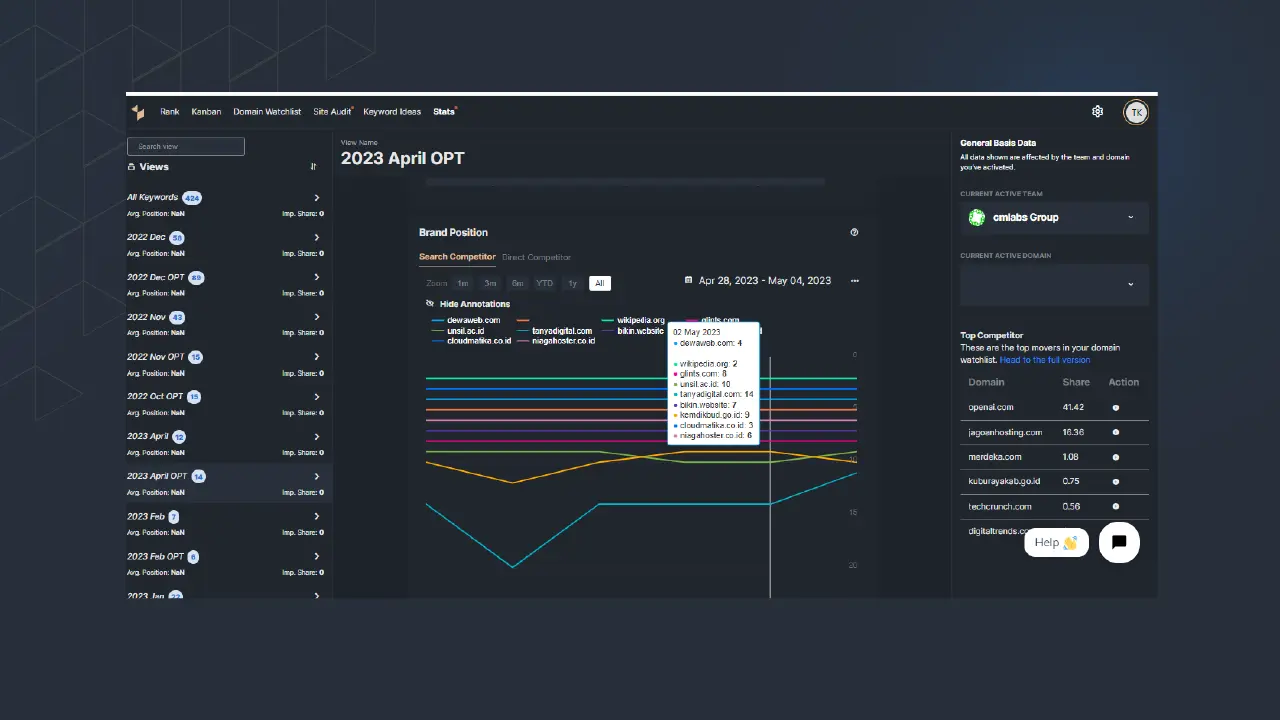 |
|---|
| Picture 5: Brand position statistics within the Stats module. It shows the list of competitors and its data |
Summarizing The Strategic Insights
From the competitor SEO tracking, you will gain some insight to help your website grow. This activity become more important than ever because you can use the data for the following strategy:
- Identification of Competitor Strengths and Weaknesses
- Benchmarking and Goal Setting
- Discovery of Keyword Opportunities
- Content Gap Analysis
- Evaluation of Technical Optimization
- Competitive Positioning
By leveraging these insights, you can make informed decisions to optimize your SEO efforts and drive business success.
Conclusion
In conclusion, competitor SEO tracking is a crucial practice for businesses seeking to achieve success in the online landscape. By monitoring and analyzing your competitors' SEO performance, you gain valuable insights that inform your own strategies and decision-making.
Remember, you don't have to do it manually because Sequence Stats as an SEO competitor analysis toolcan do it for you. Thus, automate your SEO activity and allocate your time for the bigger purpose of increasing your website performance.